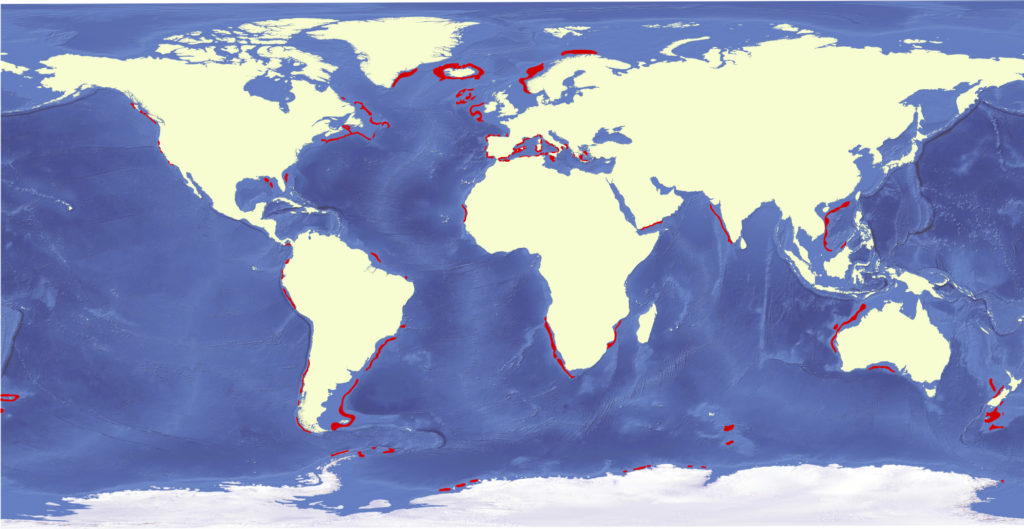Background
Bottom trawling is one of the most widespread fishing practices in the world’s oceans. It involves towing of nets along the seafloor to harvest benthic and demersal living resources for human consumption or industrial uses. Traditionally, most of demersal fishing activity has been undertaken on the continental shelf. Over the last decades, however, a general exhaustion of many traditional shallow stocks, combined with advances in fishing technologies, have pushed commercial fishing into deeper waters (>200 m) (Morato et al., 2006). It has been estimated that the overall oceans’ area used as trawling grounds amounts to 22 million km2 (Halpern et al., 2008), 20% of which are located on the continental slope (Puig et al., 2012).

The European Union (EU) and other regional organisations have identified bottom trawling as the principal human activity causing damage to the seafloor and associated biological communities due to its widespread geographical presence, recurrence, and intensity (Benn et al., 2010). The dragging of trawling gears along the seafloor results in scraping and ploughing of the seabed, which leads to the formation of turbid plumes of resuspended sediments, changes in the sediment erosion/accumulation rates and modifications of their fluxes and budgets (Martin et al., 2014). The sum of these human- induced perturbations have been associated to measurable alterations of the seabed integrity and submarine geomorphology (Clark et al., 2010), which also affect the ecosystem functioning (De Groot, 1984; Pusceddu et al., 2014).

At small spatial scales, bottom trawling has been shown to result in high relief track marks and smoothening of topographic features created by sedimentary flows oceanographic processes and fauna, such as ripples and mounds (Benn et al., 2010).


Over large spatial and temporal scales, a recent study conducted in La Fonera Canyon (NW Mediterranean) reported a general flattening and homogenisation of the seafloor relief in heavily trawled areas, suggesting that recurrent trawling over the same fishing grounds would result in a reduction in the topographic complexity (Puig et al., 2012).


As fishing pressure on the deep sea intensifies, there is a growing need to quantify, monitor and mitigate the impacts of bottom trawling on the deep seafloor. However, until now, most have focused on relatively shallow settings (<200 m) affected by energetic hydrodynamics (e.g. storm waves, tides), which can produce significant resuspension that can often conceal the effects of trawling. In contrast, very few studies address the effect of continued trawling activities at depths beyond shelf break. TrawledSeas aims to fill this gap by investigating deep sea regions that have been intensively trawled during decades.